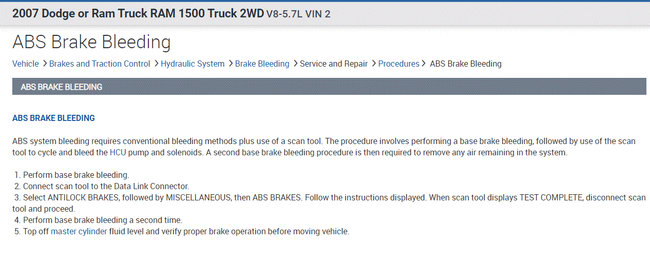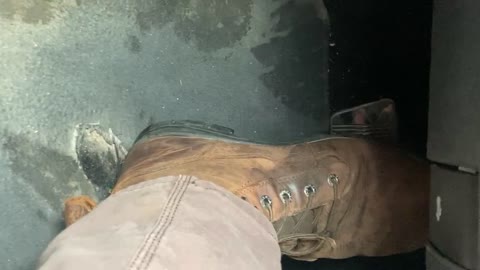Having an issue with air in the system or maybe another problem I'm unaware of.
Brakes were squealing pretty bad. Decided to do a simple brake pad replacement which I ended up replacing both front calipers and rear passenger caliper. Pads were worn unevenly on front passenger side. Unbolted top bolt and loosened bottom bolt on caliper bracket. Was having trouble rotating caliper down to access pads and noticed the piston was slightly indented/damaged. Was able to pry it off but damaged the piston pretty bad during the process. Front driver side boot on the caliper was shot and rear passenger side caliper had some damage to the face of the piston as well. During the caliper replacement(s) I accidentally allowed the fluid reservoir to completely empty.
Installed new pads all around, new calipers. I did not replace rotors. Using the manual bleed method with a friend in the cab and a homemade bleeder bottle I bled the brake system starting with furthest caliper from the master cylinder and ending with the closest.
Started the vehicle and brake pedal went all the way to the floor with no resistance. My braking power was only at the very end of travel. Basically I could stop the vehicle at the very end of the pedal travel, which was/is at the literal floor. Went through another brake bleed process with the same results.
Decided to replace the master cylinder after making sure I had no leaks. Bench bled the master cylinder, replaced it, topped it off and processed another brake bleed with the same results. Pedal to the floor and with the new master cylinder it seems to have worsened the condition of no resistance. Had no partner this time. Using the homemade brake bleed bottle. With the bottle 1/3 full and clear hose at the bottom went through the brake bleed procedure once again. Same results.
Purchased an Autel scanner with ABS bleeding capabilities. Went through the bleeding procedure on the scanner. Was unsure if I could process this by myself. Basically I am unsure if the pedal has to be depressed the entire time and a second person has to open the bleeder when given the instruction to do so on the scanner. My procedure was as followed.
Connected scanner to truck
Selected ABS brake bleed
Scanner asked to depress brake pedal
Brake pedal depressed
Scanner activated ABS (I could audibly hear the system engage)
Scanner said to open front right bleeder, depress brake pedal
I got out of truck, connected my bleeder bottle, opened bleeder valve on front passenger side I entered truck and depressed brake and selected ok on scanner.
Scanner activated ABS system then told me to close bleeder.
I exited the truck closed the bleeder and could see that fluid had been pushed out into the bleeder bottle.
The same procedure processed for the rear "right" bleeder.
After closing the rear right (passenger) bleeder entered the truck and pressed ok on scanner. Scanner started bleeding procedure was finished.
After the ABS bleed I re-bled the system manually with bleeder bottle. Started truck and issue was not resolved or improved. I redid the process twice more with no improvement or change. I'm at a loss now. Any ideas where I should start?
Saturday, June 26th, 2021 AT 2:00 PM




